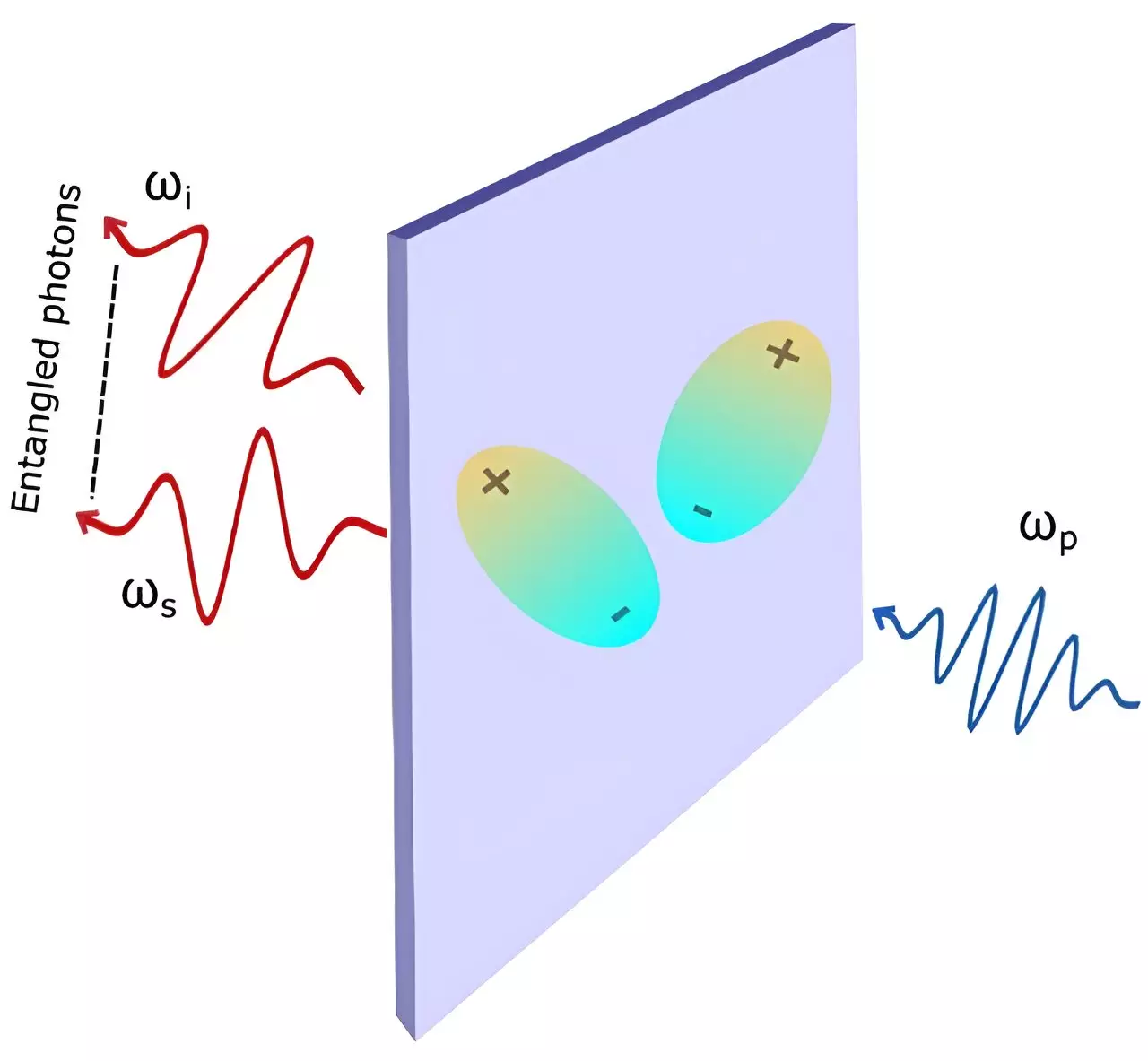Recent research hailing from the National University of Singapore (NUS) has unveiled a significant stride in the field of quantum optics, focusing on improving the efficiency of entangled photon pair generation. Entangled photons, essential to numerous quantum technologies—ranging from quantum computing to secure communications—are produced traditionally through a nonlinear optical process known as spontaneous parametric down-conversion (SPDC). However, this process is often hampered by inefficiencies, necessitating innovative solutions to bolster its effectiveness.
The key to this advancement lies in the team’s pioneering exploration of excitonic resonances—interactions between bound electron-hole pairs (excitons) within nonlinear optical crystals. Conducted under the guidance of Associate Professor Su Ying Quek from the Department of Physics, the researchers unveiled that by strategically manipulating the conditions within the crystal, particularly the tightness of the excitonic interactions, they could significantly enhance the SPDC process. The findings suggest that when opposite charges related to excitonic formations are sufficiently proximate, the probability of successful transitions and subsequent photon pair generation dramatically increases.
Previously, studies of SPDC typically overlooked these excitonic effects. The NUS team undertook fully quantum mechanical calculations, shedding light on the non-linear optical responses of various materials to incident light—an endeavor that has led them to propose novel methods to exploit excitonic interactions and pave the way for ultrathin quantum light sources.
One revolutionary aspect of the research is the focus on ultrathin crystals, which have historically been shunned in SPDC applications due to a perceived drop in efficiency when reduced in size. The NUS team’s work directly challenges this notion by indicating that the heightened excitonic interactions found in these thin layers can offset traditional efficiency drawbacks. In fact, this unique characteristic makes ultrathin crystals viable candidates for developing entangled photon sources, which could simplify the integration of such materials into future hybrid quantum-photonic devices.
As Professor Quek elucidates, this prospect could significantly alleviate the phase matching problems usually encountered in SPDC processes. By eliminating these technical barriers, ultrathin crystals could facilitate the production of entangled photons more easily, opening new avenues for practical applications in quantum technologies.
The research team employed a layered nonlinear optical material known as NbOI2, conducting rigorous simulations that examined the second harmonic generation (SHG)—the inverse of SPDC—and how different polarization angles of the incident light influenced output intensity. Their results were consistent with previously established experimental data, reinforcing the validity of their theoretical approach. This correlation between simulation and real-world observation underscores the potential of utilizing excitonic enhancements in practical applications.
Moreover, the study revealed an interesting phenomenon regarding frequency matching. The efficiency of SPDC is markedly improved when the pump beam’s frequency is attuned to an excitation level in the crystal. This insight adds another layer of complexity to the process of generating entangled photons, presenting opportunities for optimization in designs of quantum devices.
The implications of this research extend far beyond academic interest; they herald a transformative potential for the next generation of quantum technologies. As devices increasingly rely on the generation of entangled photons, the capacity to streamline their production through the use of ultrathin materials may lead to the development of more compact, efficient, and integrated quantum systems.
The research conducted at NUS has not only illuminated the ways in which excitons can foster enhancements in photon pair generation efficiency but also reshaped our understanding of how thinner materials can be harnessed for advanced quantum optics. As the field moves forward, these insights are poised to leave a lasting impact on the landscape of quantum computing and photonics, catalyzing the evolution of technologies that leverage the dual nature of light and quantum physics.

